FIAC 2021
Cecilia Granara __21.10–24.10.21 __Grand Palais Éphémère, Paris
for inquiries

Cecilia Granara, New works, 2021
Installation view, FIAC, Paris
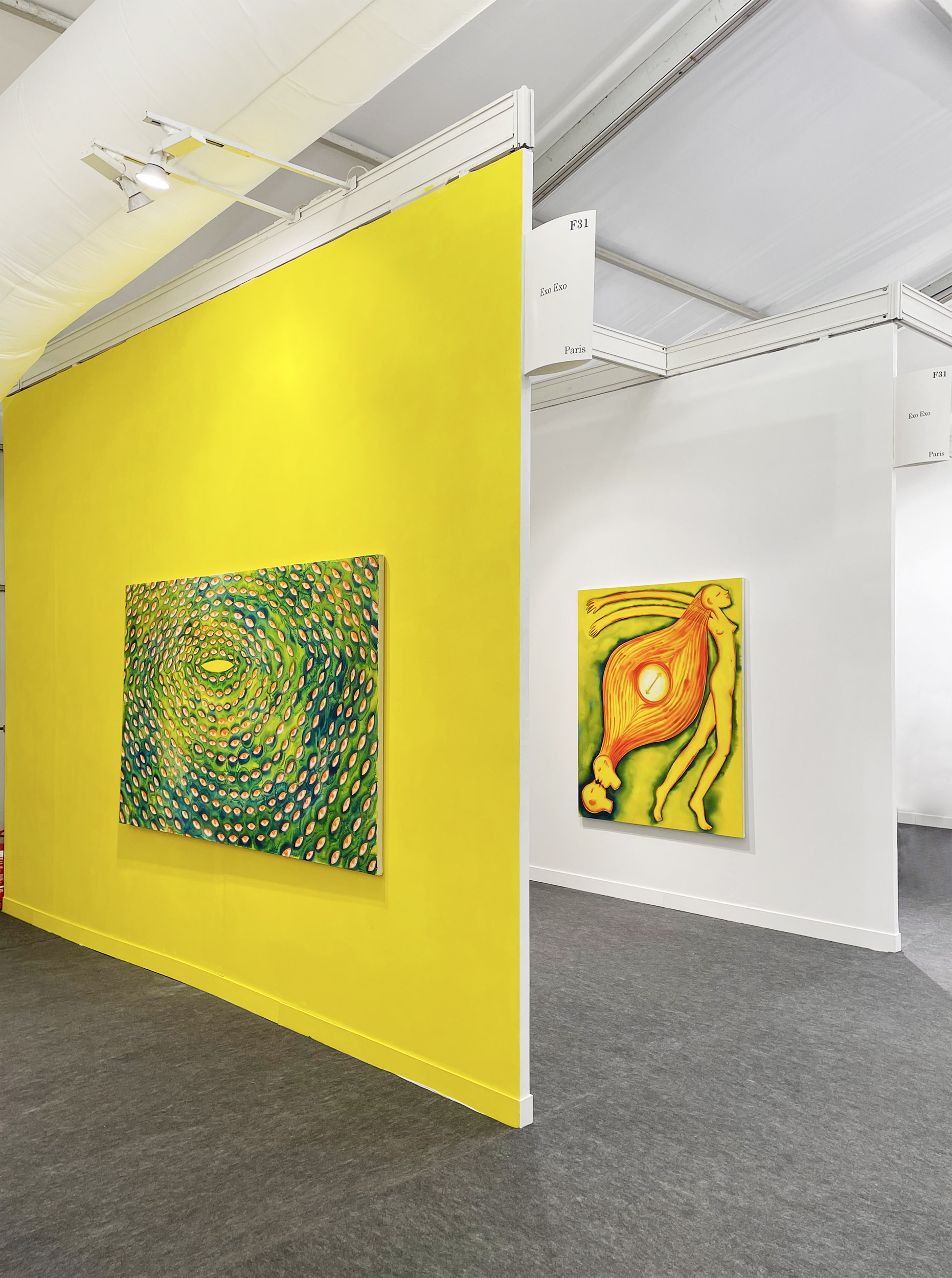
Cecilia Granara, New works, 2021
Installation view, FIAC, Paris

Cecilia Granara,
L’Amore, Il Tempo (timing is everything), 2021
Oil, acrylic and pigments on canvas
160 x 130 cm
Inquire
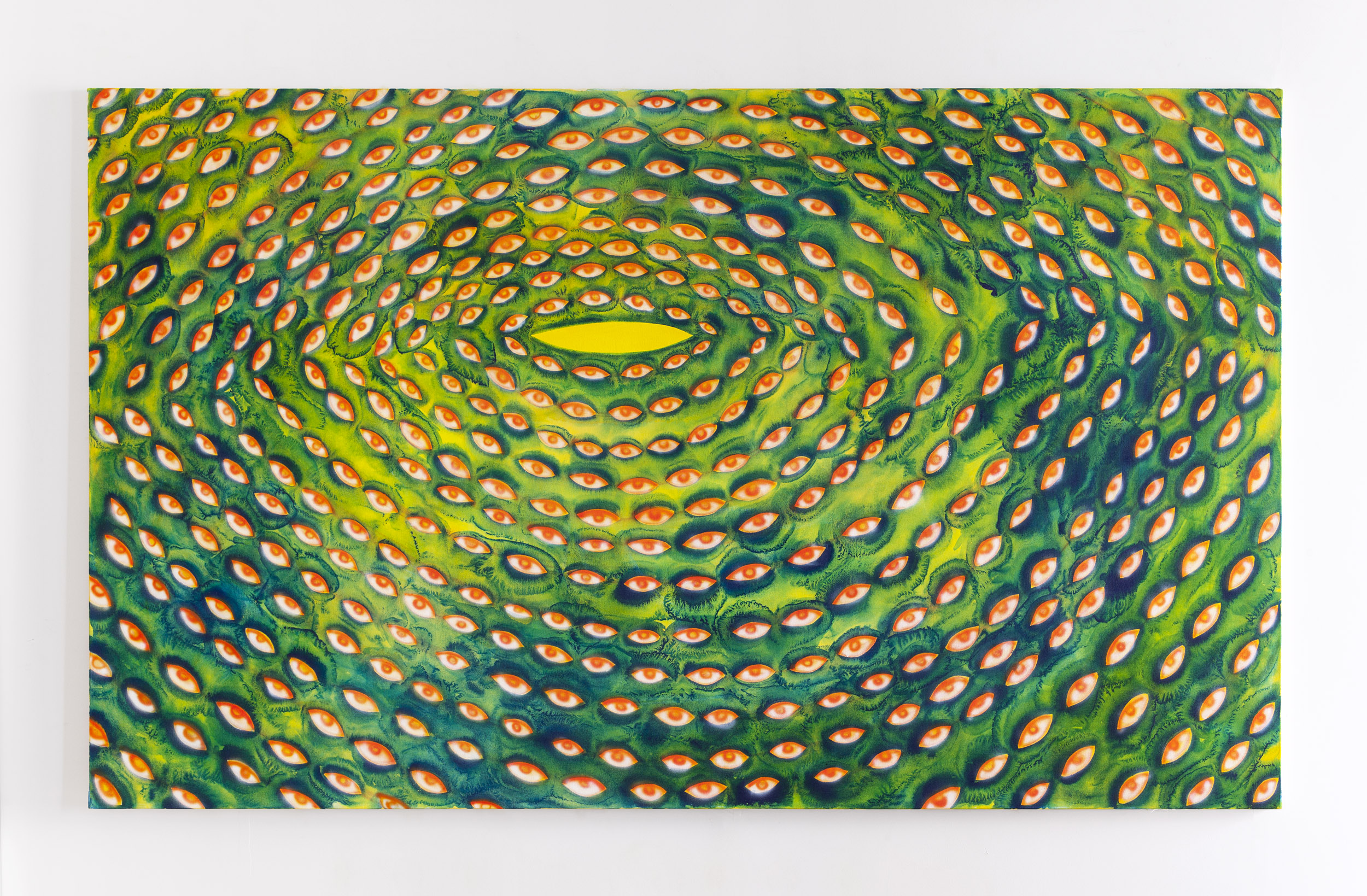
Cecilia Granara,
I feel seen (the only way out is through), 2021
Acrylic, airbrush and pigments on canvas
135 x 240 cm
Inquire

Cecilia Granara, New works, 2021
Installation view, FIAC, Paris
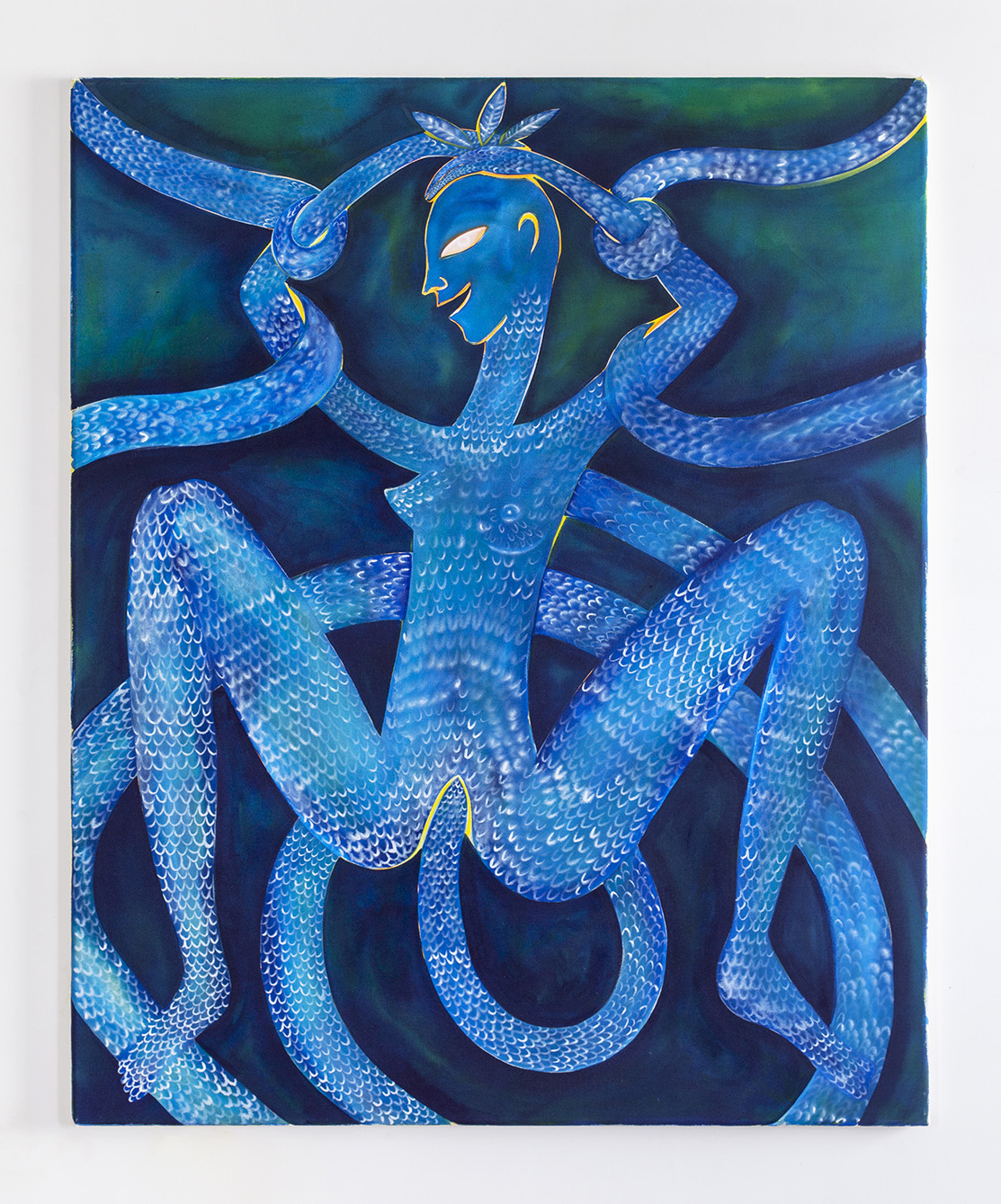
Cecilia Granara,
Naissance, Puissance, 2021
Oil, acrylic and pigments on canvas
160 x 130 cm
Inquire

Cecilia Granara, New works, 2021
Installation view, FIAC, Paris

Cecilia Granara,
Zero, 2021
Oil, acrylic and pigments on canvas
24 x 18 cm
Inquire
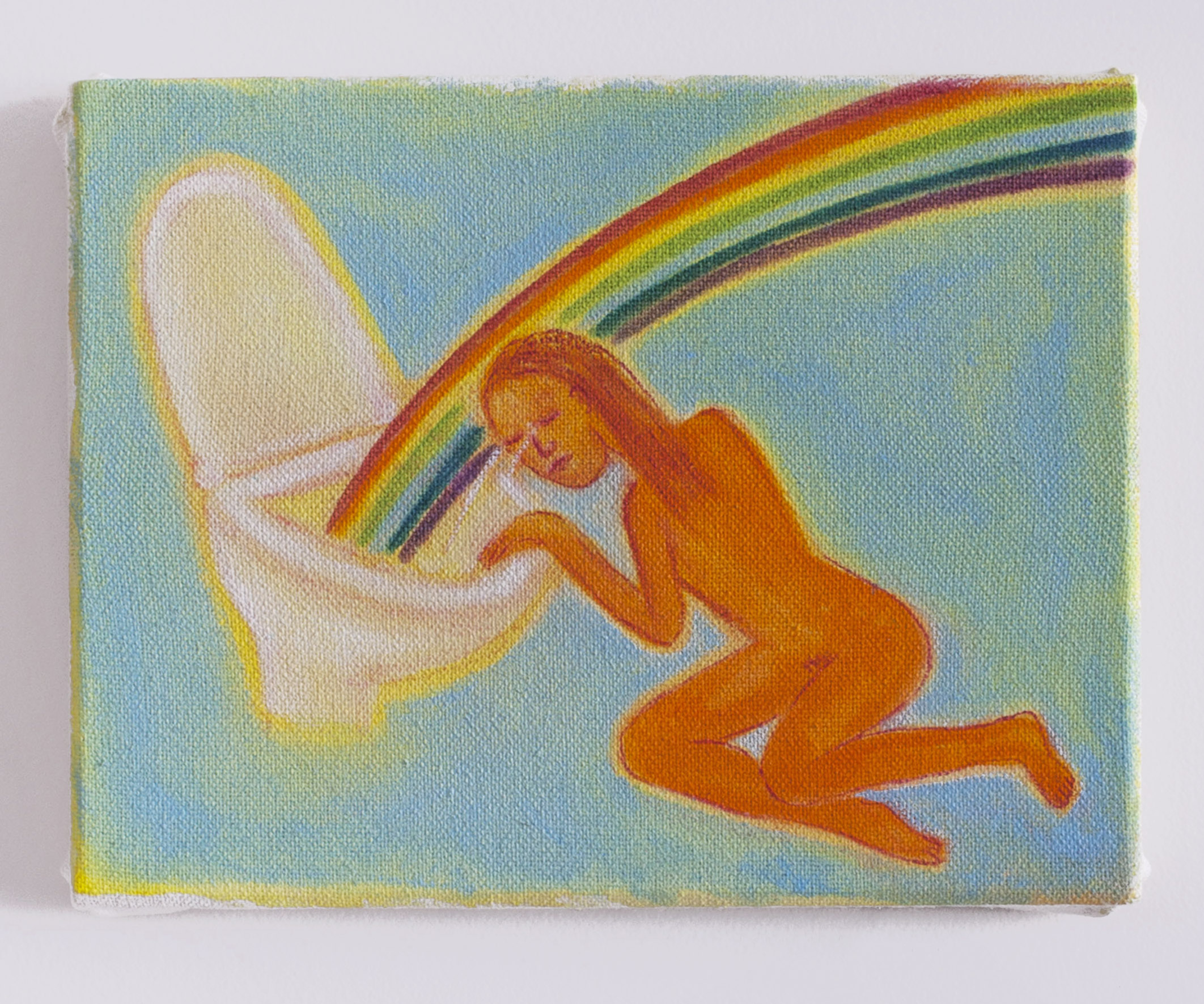
Cecilia Granara,
Crying in the chiottes, 2021
Oil and acrylic on canvas
14 x 18 cm
Inquire

Cecilia Granara, New works, 2021
Installation view, FIAC, Paris
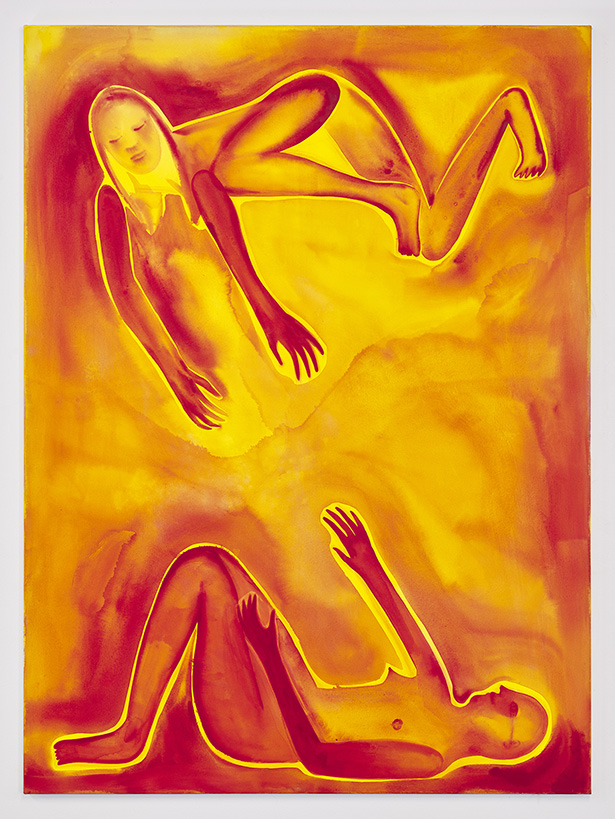
Cecilia Granara,
Salvarsi I, 2021
Acrylic and pigments on canvas
170 x 120 cm
Inquire
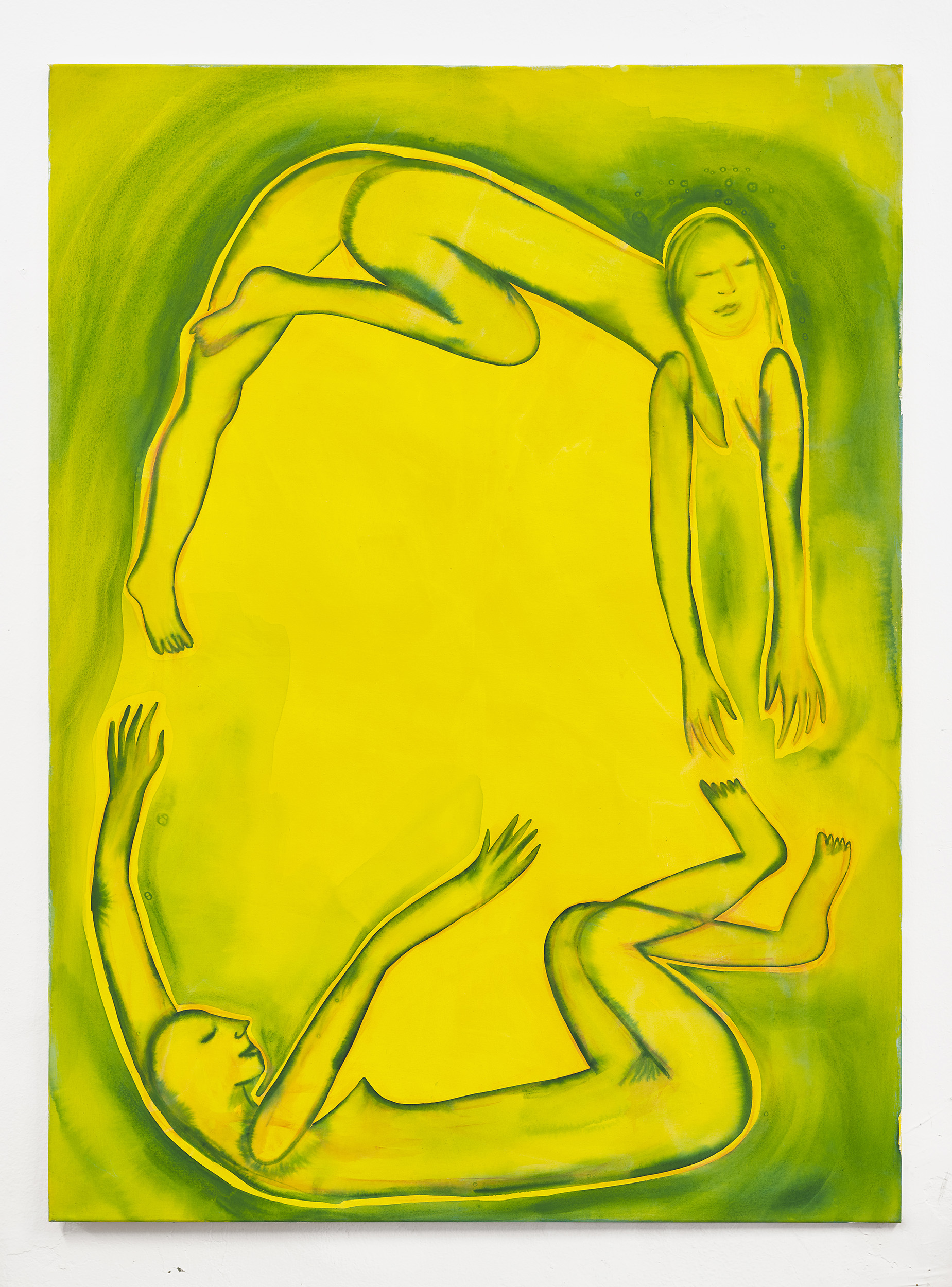
Cecilia Granara,
Salvarsi II, 2021
Acrylic and pigments on canvas
170 x 120 cm
Inquire
Nous pourrions être ici dans une chapelle italienne. Sur le mur du fond, les deux tableaux ‘Salvarsi’ (‘Se sauver’) veillent sur nous et nous protègent en éloignant la mort. Le verbe est ici l’apologie du paradoxe entre parler de soi et parler des autres, se sauver soi et se sauver les uns les autres. Deux êtres sont connectés sans jamais se toucher. Ensemble, ils.elles dessinent un cercle. Entre eux.elles, l’espace n’est pas un vide mais un portail par lequel circulent les énergies dans une boucle infinie. Comme si, par ce mouvement qu’elles répètent, les peintures de Cecilia avaient le pouvoir de briser les limites du temps. Car tout a besoin de temps, l’amour comme la réparation de la douleur. C’est là l’enjeu de la peinture pour Cecilia, créer des espaces émotionnels de connexion par la couleur, des espaces chaleureux et accueillants pour souffrir (au sens d’éprouver), pleurer et être ensemble.
Les tableaux de Cecilia sont des déclarations d’amour au trouble et à la confusion. Nous n’en avons jamais parlé ensemble je crois, mais elle s’intéresse aux zones floues de l’interprétation. ‘Body Confusion’ est un des premiers titres que je retiens de ses peintures. Le tableau parle d’un état émotionnel liquide et tourbillonnant. En ébullition. Il n’y a pas de regret dans le travail de Cecilia, il n’y a que de l’intuition et de l’impulsion. Ça coule, ça vole. Ces tableaux ne sont pas des images mais des fenêtres sur des espaces profondément mentaux. Un intime profondément empathique qui parle des émotions du vivant et invite à les éprouver collectivement dans une communion des personnes, des corps, des genres, presque des espèces.
Le 14 juin 2021, j’envoie à Cecilia un lien vers un article du Courrier International sur la performance de l’artiste américaine Marni Kotak qui a décidé de donner naissance en public à son fils le 8 octobre 2011 dans sa galerie d’art new-yorkaise.
Moi: Tu as déjà entendu parlé de cette performance ?
Cecilia: Non je connaissais pas !
Moi: Moi non plus !
Cecilia: C’est presque logique pour moi que l’accouchement devienne un spectacle / une performance à encadrer dans une galerie car on voit si peu d’images circuler de cet acte. Pourtant on est tous et toutes venu.e.s de ça ! Mais on ne l’a jamais vu.
Moi: C’est la performance absolue en fait.
J’ai raconté longuement à Cecilia mon accouchement quand elle me l’a demandé pour réfléchir à sa nouvelle série de tableaux sur la ‘Naissance’. Je me rends compte que c’est un récit que j’ai livré à peu de gens, une histoire qui parle du flirt passionnel entre une expérience de vie et une expérience de mort. Celle qui donne naissance dans la peinture de Cecilia est une femme-serpent, dont les mouvements sinueux forment le noeud nécessaire à l’arrivée de chaque chose dans le monde, une idée, une décision, un sentiment, une vie. L’histoire de la femme et de ses représentations se situe quelque part ici entre le sublime et l’aliénation.
A l’entrée de l’atelier de Cecilia, une image de la déesse Kali préserve l’espace intime de l’artiste. Elle porte au cou les têtes décapitées de toutes les épreuves qu’elle a bravées et vaincues. Dans une de ses mains, elle serre une petite figure de l’Ego, qu’elle déteste. Celle qui la vénère est libérée de la peur de détruire. Kali est la maîtresse de la mort et du temps qui répare. Elle veille aux autres et sur les autres, éloignant les ennemis. Par ce qu’elle convoque de violence, elle est la puissance de l’incompréhension si précieuse à l’artiste. Avec Cecilia, je discute aussi beaucoup de mon repos, de mon sommeil et du sien. Nous avons l’une comme l’autre du mal à le trouver parfois, comme la quête affamée d’un refuge dont la porte est proche mais toujours difficile à ouvrir. Cecilia dit que devant ses peintures comme dans nos lits, à la fois nous quittons et voyagons, mais aussi nous ancrons et affrontons. Ensemble, on s’amuse à inventer des solutions pour dormir et rêver.
– Elisa Rigoulet
*
We could be in an Italian chapel here. On the back wall, the two paintings ‘Salvarsi’ watch over us and protect us by warding off death. The Italian verb “salvarsi” here is the apology of the paradox between talking about oneself and talking about others, saving oneself and saving each other. Two beings are connected without ever touching each other. Together they draw a circle. The space between them is not a void but a portal through which energies circulate in an infinite loop. As though, through this movement that they repeat, Cecilia’s paintings had the power to break the constraints of time. Because everything needs time, love and healing from pain alike. This is the challenge of painting for Cecilia, to create emotional spaces of connection through color, warm and welcoming spaces to suffer, to cry and to be together.
Cecilia’s paintings are a declarations of love to turmoil and confusion. We’ve never talked about it, but I’m guessing she’s interested in the gray areas of life. «Body Confusion» is one of the first titles I remember from her paintings. The work speaks of a liquid and swirling emotional state. Boiling. There is no regret in Cecilia’s work, there is only intuition and impulse. It flows, it flies. These paintings are not images but windows into deeply mental spaces. A deeply emphatic intimacy, that talks about the emotions of living things and invites us to experience them collectively in a communion of people, bodies, genres— almost species.
On June 14, 2021, I send Cecilia a link to an article in Courrier International about the performance of the American artist Marni Kotak who decided to give birth in public to her son on October 8, 2011 in her art gallery in New York.
Me: Have you ever heard of this performance?
Cecilia: No, I didn’t know about it!
Me: Me neither!
Cecilia: It almost makes sense to me that childbirth becomes a spectacle/ a performance in a gallery, because we see so few images of the act. Yet we have all come from that! But we never see it represented.
Me: It’s absolute performance actually.
I told Cecilia at length about my childbirth, when she asked me to think about her new series of “Birth” paintings. I realize that this is a story that I have told to few people, a story that ultimately is a passionate flirtat between a life experience and death experience. The creature who gives birth in Cecilia’s painting is a woman-snake, whose sinuous movements form the necessary knot for the arrival of everything in the world: an idea, a decision, a feeling, a life. The history of women and their representations lies somewhere here between the sublime and alienation.
At the entrance of Cecilia’s studio, an image of the goddess Kali preserves the artist’s intimate space. Around her neck she wears the decapitated heads of all the trials she has braved and conquered. In one of her hands, she squeezes a severed head that represents the Ego, which she hates. Those who venerate her are freed from the fear of destruction . Kali is the mistress of death and time. She watches over others, warding off enemies. Through what it summons up violence, it is also the power of incomprehension, so precious to the artist. With Cecilia, I also talk about my rest, my sleep and hers. We both struggle to find sleep and rest sometimes, like the hungry quest for a refuge whose door is close by but difficult to find. Cecilia says that in front of her paintings, as in our beds, we both leave the earth and travel, but also we anchor ourselves in life and confront it. Together, we have fun inventing solutions for sleeping and dreaming.
– Elisa Rigoulet, translation Cecilia Granara

 Cecilia Granara, New works, 2021
Cecilia Granara, New works, 2021 Cecilia Granara, New works, 2021
Cecilia Granara, New works, 2021 Cecilia Granara, L’Amore, Il Tempo (timing is everything), 2021
Cecilia Granara, L’Amore, Il Tempo (timing is everything), 2021 Cecilia Granara, I feel seen (the only way out is through), 2021
Cecilia Granara, I feel seen (the only way out is through), 2021 Cecilia Granara, New works, 2021
Cecilia Granara, New works, 2021 Cecilia Granara, Naissance, Puissance, 2021
Cecilia Granara, Naissance, Puissance, 2021 Cecilia Granara, New works, 2021
Cecilia Granara, New works, 2021 Cecilia Granara, Zero, 2021
Cecilia Granara, Zero, 2021 Cecilia Granara, Crying in the chiottes, 2021
Cecilia Granara, Crying in the chiottes, 2021 Cecilia Granara, New works, 2021
Cecilia Granara, New works, 2021 Cecilia Granara, Salvarsi I, 2021
Cecilia Granara, Salvarsi I, 2021 Cecilia Granara, Salvarsi II, 2021
Cecilia Granara, Salvarsi II, 2021